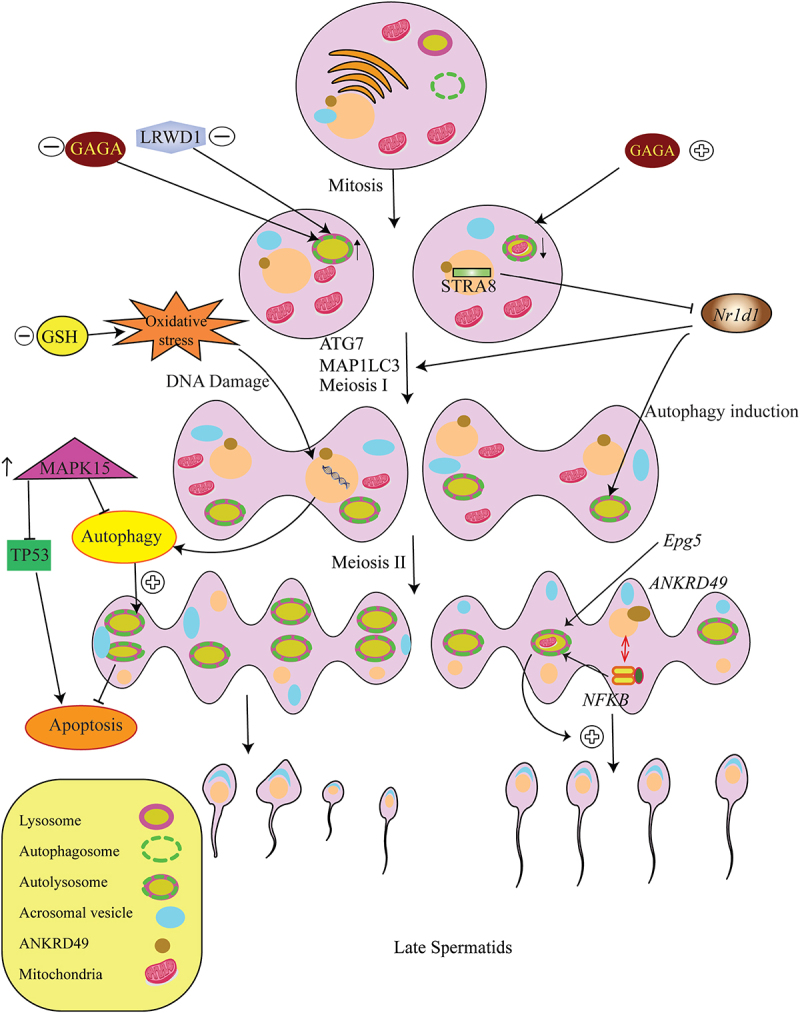Figure 1.

The role of autophagy during spermatogenesis. The induced overproduction of GAGA in the second or third mitosis in early spermatogenesis leads to an increase in the presence of autophagosomes, an increased autophagic flux, and a significant increase in mitophagy in spermatogonia. Moreover, the expression of Epg5 is involved in the augmentation of autophagy and mitochondrial clearance during spermatogenesis. Interestingly, the Nr1d1-mediated suppression of autophagy by STRA8 is necessary for mitotic to miotic transition. The rate of autophagy in spermatogenesis increases after meiosis I. Conversely, decreased levels of GSH increase the levels of MAP1LC3 proteins showing that autophagy is induced under oxidative stress, leading to the development and survival of male germ cells with more DNA damage and sperm deformations followed by azoospermia and oligozoospermia. ANKRD49, along with the NFKB pathway, increases the spermatogenesis rate via autophagy-dependent survival. In addition, overexpression of MAPK15 disrupts autophagy supportive function that controls the prevention of DNA damage and the activation of the TP53, hence causing malignant transformation of germ cells.
